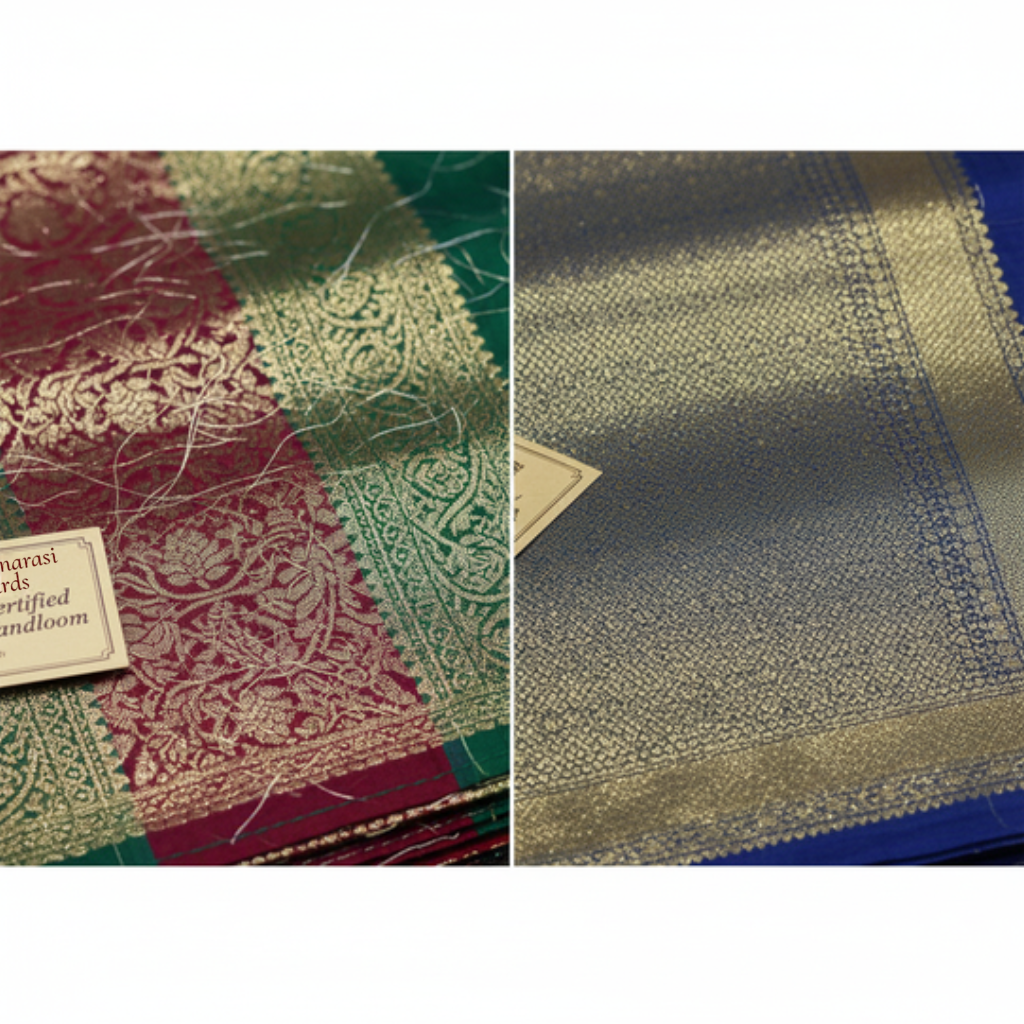Introduction
Every Banarasi fabric carries more than just silk and zari — it carries centuries of tradition, artistry, and cultural memory. In the ghats and gallis of Varanasi, the gentle rhythm of looms continues to weave stories that connect the past with the present. At Banarasi Yards, we celebrate this living heritage, not just by preserving the art of handloom weaving, but also by reminding the world of the value and authenticity of every handwoven Banarasi saree and suit.
In this blog, we explore the languag...

The Language of Looms: Stories Woven into Banarasi Fabrics
The Banarasi weave is often described as poetry on fabric. Each motif, whether a delicate buti, a regal jaal, or the shimmering floral borders, carries meaning that goes beyond ornamentation. The weavers, known as karigars, pass down not only their skills but also their stories — of traditions, rituals, and their intimate relationship with the loom.
When you drape a Banarasi saree, you are not just wearing silk. You are carrying a piece of heritage that has been shaped by countless hours of patience and devotion. The subtle sound of the shuttle, the precision of each hand movement, and the pride of generations are all embedded in the weave. This silent language of looms continues to resonate today, reminding us that Banarasi is not merely a textile, but a timeless conversation between craft and culture.
Handmade vs. Machine-Made: How to Identify Authentic Banarasi Weaves

With the growing popularity of Banarasi sarees and suits, the market today is flooded with machine-made imitations that mimic the look but lack the soul of a handloom. For buyers, this makes authenticity more important than ever.
An authentic handwoven Banarasi will always have slight irregularities in its weave — a small motif variation, a subtle asymmetry in design — that serve as a stamp of human artistry. Machine-made fabrics, in contrast, are mechanically perfect but soulless. The reverse side of a genuine Banarasi often reveals “floating” threads or intricate zari work, while fakes look flat and printed.
Another test lies in the zari itself. Traditional Banarasi uses real gold or silver-plated threads, giving a rich, lasting sheen. Cheaper alternatives use synthetic materials that fade with time. At Banarasi Yards, we ensure every piece is certified handloom, created with pure silk and traditional techniques, so that when you own a Banarasi, you own a true heirloom.
Reviving Forgotten Weaves: Rare Banarasi Techniques Making a Comeback

Banarasi weaving has always been diverse, with each gharana (weaving family) guarding its own styles. Over time, many rare techniques fell out of practice due to the difficulty of weaving and the dominance of commercial demand. Today, however, these forgotten weaves are making a comeback as connoisseurs and designers rediscover their beauty.
One such technique is the Tanchoi, known for its intricate satin weave patterns without zari, often featuring paisleys and florals inspired by Persian designs. Another is Jangla, a luxurious style with heavy jaal patterns spread across the fabric, once reserved for royal trousseaus. Then there’s the Cutwork Banarasi, delicate and airy, with motifs appearing as if floating on the base silk.
By reviving these techniques, we are not just preserving heritage but also giving modern women access to fabrics that combine artistry with rarity. These are pieces that transcend fashion trends and become treasures to be cherished across generations.
Conclusion
The story of Banarasi is not simply about a fabric; it is about the people, the looms, and the heritage that breathes life into every weave. At Banarasi Yards, we take pride in being part of this journey — ensuring that each saree or suit we create is not just attire, but a legacy of handwoven excellence.
In a world increasingly defined by fast fashion, Banarasi stands as a reminder that true beauty lies in patience, authenticity, and craft. Whether through the language of looms, the assurance of authenticity, or the revival of forgotten weaves, Banarasi continues to shine as India’s timeless gift to the world.


0 comments